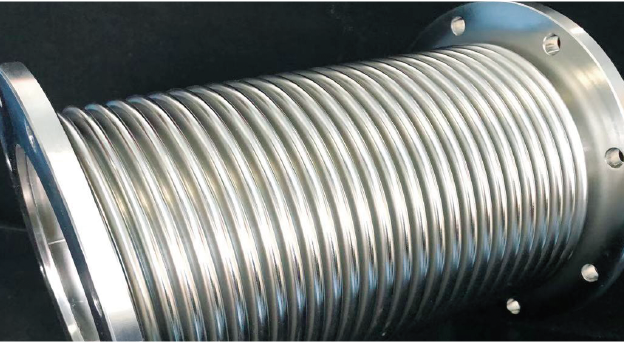
Metal bellows, as an important engineering component, are widely used in various industrial systems. In order to ensure its long-term stable operation, regular maintenance and fault analysis must be carried out. The following details the maintenance methods of metal bellows and common faults and their analysis.
1. Maintenance of metal bellows
Regular inspection:
Appearance inspection: Regularly check whether the appearance of the bellows has deformation, cracks, corrosion and other phenomena. Pay special attention to whether the corrugated part has obvious wear or deformation.
Connection inspection: Check the tightness of the connection between the bellows and the pipeline and equipment to ensure that there is no looseness or leakage.
Vibration and displacement inspection: Use vibration detectors and displacement sensors to monitor the vibration and displacement of the bellows in the working environment and detect abnormalities in time.
Cleaning and anti-corrosion:
Surface cleaning: Clean the surface of the bellows regularly to remove dust, oil and scale, and keep the surface clean.
Anti-corrosion treatment: According to the characteristics of the working environment, the bellows are regularly treated with anti-corrosion, such as coating anti-rust paint, plating treatment, etc., to prevent corrosion.
Lubrication and maintenance:
Lubrication of sliding parts: Regularly lubricate the sliding parts of the bellows, such as using high-temperature grease to reduce wear and friction.
Maintenance of sealing parts: Regularly check the sealing parts of the bellows, such as sealing rings, gaskets, etc., to ensure good sealing performance, and replace seals when necessary.
Regular replacement:
According to the service life: According to the design life and actual use of the bellows, formulate a replacement plan and replace aging or damaged bellows in time.
Regular maintenance records: Establish maintenance records for bellows, including inspection, cleaning, lubrication, replacement and other information, for easy tracking and management.
2. Common faults of metal bellows and their analysis
Leakage fault:
Fault phenomenon: Leakage occurs at the connection of the bellows, liquid or gas leakage.
Fault cause: The connection part is not firmly tightened, the seal is aging, the bellows is damaged, etc.
Fault analysis: Check the tightness of the connection part, replace the aging or damaged seal, and replace the bellows if necessary.
Deformation fault:
Fault phenomenon: The bellows is obviously deformed, twisted or bulged.
Causes of failure: excessive mechanical stress, uneven thermal expansion and contraction, material fatigue, etc.
Failure analysis: Reduce mechanical stress, improve the working environment, regularly check the deformation of the bellows, and replace it if necessary.
Corrosion failure:
Failure phenomenon: Corrosion, discoloration, peeling, etc. on the surface of the bellows.
Failure cause: Chemical medium corrosion in the working environment, improper material selection, inadequate anti-corrosion measures, etc.
Failure analysis: Improve the working environment, select suitable materials, strengthen anti-corrosion treatment, and regularly check the corrosion of the bellows.
Fracture failure:
Failure phenomenon: The bellows breaks and cracks.
Failure cause: excessive mechanical stress, material fatigue, manufacturing defects, etc.
Failure analysis: Reduce mechanical stress, improve the working environment, regularly check the fracture of the bellows, and replace it if necessary.
Vibration failure:
Failure phenomenon: The bellows vibrates abnormally during operation.
Failure cause: Pipeline system vibration, mechanical resonance, improper installation, etc.
Failure analysis: Check the vibration of the pipeline system, adjust the installation position of the bellows, and add vibration reduction measures if necessary.
Conclusion
The maintenance and fault analysis of metal bellows are important links to ensure their long-term stable operation. The service life of bellows can be effectively extended through regular inspection, cleaning and anti-corrosion, lubrication and maintenance, and regular replacement. At the same time, through the analysis and treatment of common faults, problems in the operation of bellows can be discovered and solved in time to ensure the safety and stability of the system. In practical applications, scientific and reasonable maintenance and fault analysis plans should be formulated according to the specific working environment and use requirements of the bellows to achieve the best use effect and performance.
Post time: Nov-21-2024
